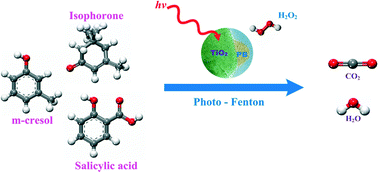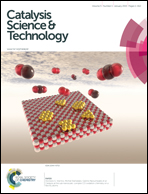Prussian blue/TiO2 nanocomposites as a heterogeneous photo-Fenton catalyst for degradation of organic pollutants in water†
Abstract
Nowadays, a lot of research focuses on accelerating FeII/FeIII redox cycles to increase the pseudo first-order rates of the Fenton reaction. Here, Prussian blue/titanium dioxide nanocomposites (PB/TiO2 NPs) were designed as heterogeneous photo-Fenton catalysts to increase the FeII recovery in degrading organic contaminants in water for the first time. The PB/TiO2 NPs were characterized by various analytical techniques to obtain the optimum ratio of PB and TiO2 for efficient degradation of organics. The performance of the catalysts was tested by following the removal of rhodamine B dye, salicylic acid, m-cresol, and isophorone under various conditions (pH, ratios of PB and TiO2, H2O2, and temperature). Formation of the intermediates of iron (FeII/FeIII) in the studied system using Mössbauer spectroscopy was explored for the first time and presents important insights into the relevant catalytic phenomena. The generation of ˙OH radicals in the reaction system was identified using electron paramagnetic resonance spectroscopic techniques. Results demonstrated that the developed PB/TiO2 NPs were stable and could degrade organic contaminants in water efficiently.


 Please wait while we load your content...
Please wait while we load your content...